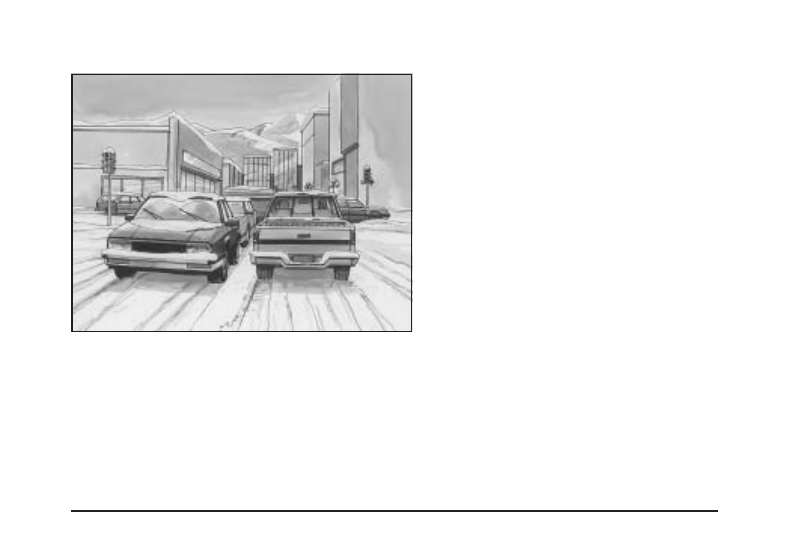Pontiac Montana SV6 (2006 year). Instruction - part 18

Winter Driving
Here are some tips for winter driving:
•
Have your vehicle in good shape for winter.
•
You may want to put winter emergency supplies in
your vehicle.
Also see Tires on page 5-53.
Include an ice scraper, a small brush or broom,
a supply of windshield washer fluid, a rag, some winter
outer clothing, a small shovel, a flashlight, a red cloth,
and a couple of reflective warning triangles. And, if you
will be driving under severe conditions, include a
small bag of sand, a piece of old carpet, or a couple
of burlap bags to help provide traction. Be sure you
properly secure these items in your vehicle.
Driving on Snow or Ice
Most of the time, those places where the tires meet the
road probably have good traction.
However, if there is snow or ice between the tires and
the road, you can have a very slippery situation. You will
have a lot less traction, or grip, and will need to be
very careful.
4-27